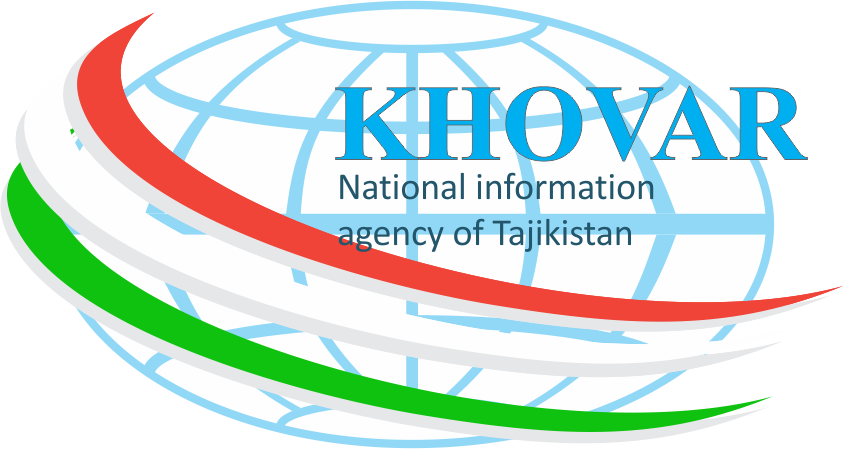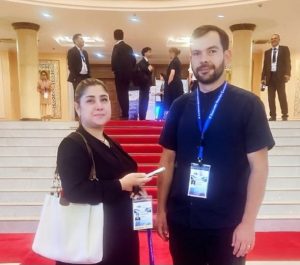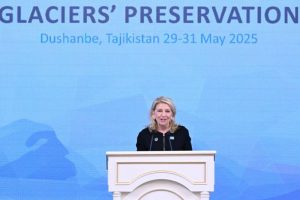WHO Representative: «Each Year, 800,000 People Die Due to Poor Sanitation and Poor-Quality Water»
Read also

DUSHANBE, 07.06.2022 (NIAT Khovar) – “During the forums and plenary sessions taking place today in Dushanbe, not only water problems are being discussed, but also the possibilities of achieving sustainable development goals in terms of healthcare. This is an important and timely step that will allow not only to discuss problems, but also to take appropriate necessary decisions. It is gratifying that these days Dushanbe has become a platform that has brought together many states to solve a common problem,” said Oliver Schmoll, head of the Water Resources and Climate Program at the WHO Regional Office for Europe.
“Our main goal is to protect the health of people in Central Asia. Health, hygiene and sanitation issues are discussed to solve problems and gradually improve the situation. Looking at the figures available for Central Asia, we can say that 95% of the population has access to a basic drinking water supply. In terms of sanitation, 95% have access to basic sanitation. This means that they use sanitary facilities that are not shared with other households. If you look at these statistics, you can conclude that this is a good result. However, if you consider the availability of safe bathrooms, safe sources of water that are protected from germs and chemical pollutants, then these figures drop sharply. Speaking about drinking water, I want to note that only 70% of Central Asia’s population have access to safe water sources. Today, unfortunately, we do not have accurate data on the sources of water and sanitation,” commented Schmoll.
According to the data given by him, in some countries, it is possible that not all households have access to soap and water. There is a gap in improving hygiene and sanitation. It is important to note the significant disparities in access to basic services.
“Statistics concerning 95% of the population with access to such basic services do not apply to the rural and poor population. There are significant disparities in this regard. It is the rural and poor population that is most disadvantaged and marginalized. In Central Asia, problems with diseases such as diarrhea arise from the consumption of surface water. People who consume water from open water sources often have serious health problems. Every year, 800,000 people die due to poor sanitation and poor-quality water,” added Schmoll.











 Lonely Planet Includes Tajikistan among the World’s Best Travel Experiences
Lonely Planet Includes Tajikistan among the World’s Best Travel Experiences Emomali Rahmon and Xi Jinping Highlight Significance of Launching Direct Passenger Flights between Dushanbe and Beijing
Emomali Rahmon and Xi Jinping Highlight Significance of Launching Direct Passenger Flights between Dushanbe and Beijing Tajikistan Provides Key Platform for Science–Policy Dialogue on Glacier Preservation, Says UCA Researcher
Tajikistan Provides Key Platform for Science–Policy Dialogue on Glacier Preservation, Says UCA Researcher CGTN Journalist Praises Tajikistan’s Leadership on Glaciers’ Issues and Highlights China-Tajikistan Cooperation
CGTN Journalist Praises Tajikistan’s Leadership on Glaciers’ Issues and Highlights China-Tajikistan Cooperation UN Women Official Stresses the Role of Women in Climate Action at Glaciers’ Conference in Dushanbe
UN Women Official Stresses the Role of Women in Climate Action at Glaciers’ Conference in Dushanbe Japanese Researcher Highlights Tajikistan’s Role in Regional Water Security at High-Level Glaciers’ Conference
Japanese Researcher Highlights Tajikistan’s Role in Regional Water Security at High-Level Glaciers’ Conference “This is Not Just Ice – This is Life”: UN Deputy Chief Calls for Urgent Action at Glaciers Conference in Dushanbe
“This is Not Just Ice – This is Life”: UN Deputy Chief Calls for Urgent Action at Glaciers Conference in Dushanbe Dushanbe Hosts Landmark International High-Level Conference on Glaciers’ Preservation
Dushanbe Hosts Landmark International High-Level Conference on Glaciers’ Preservation The Climate Crisis Is Primarily a Crisis of Children’s Rights
The Climate Crisis Is Primarily a Crisis of Children’s Rights Chinese Scientist Highlights Glacier Retreat as a Tangible Reality for Tajikistan, the Region, and the World
Chinese Scientist Highlights Glacier Retreat as a Tangible Reality for Tajikistan, the Region, and the World Dushanbe Conference Launches New Era in Global Glacier Diplomacy
Dushanbe Conference Launches New Era in Global Glacier Diplomacy Global Leaders Urged to Fund UN Trust for Glacier Preservation
Global Leaders Urged to Fund UN Trust for Glacier Preservation














